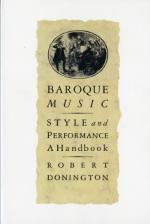|
This section contains 2,159 words (approx. 8 pages at 300 words per page) |

|
The Long View.
In assessing the changes that occurred in philosophy in the Baroque period it is helpful to take a long view so that the depth and significance of the discipline's early-modern transformations stand out when contrasted against the traditional role that philosophy had long played in Europe's schools and universities. In the Middle Ages philosophy had developed in tandem with Europe's secondary schools and universities, the primary venues for higher education. To undertake advanced training in a university, students first completed a course of study in the liberal arts. The arts themselves were divided into two branches known as the trivium and the quadrivium. The trivium consisted of the areas of study that would today be called the "language arts" and included instruction in grammar, rhetoric (style), and dialectic (reasoned argumentation). In the quadrivium, by contrast, were consigned all those branches of...
|
This section contains 2,159 words (approx. 8 pages at 300 words per page) |

|




